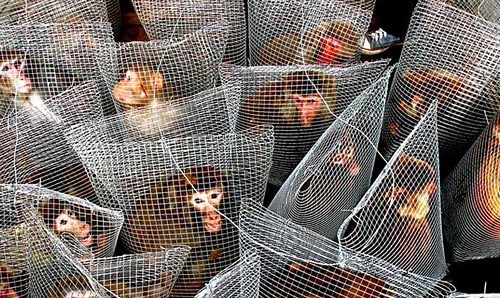How China has standardised animal testing to western cruelty levels
31 March 2016
China is set to adopt stricter welfare standards for animals used in experiments. Animals Asia Animal Welfare Director Dave Neale challenges China to be better than the west.
Worldwide over 100 million animals are used in experiments each year.
The ideas of “speciesism” is well known within communities that practice cruelty-free living. It means valuing one type of animal over another. A domestic dog over a farmed chicken for example.
Arguably using animals for research is the ultimate in devaluing not only a species but also trivialising an individual’s pain and suffering. If the aim is to improve life for mankind then, it’s believed by those who back such experiments, the suffering of individual animals is a small price to pay.
It’s a belief that doesn’t begin to compare relative suffering. It’s accepted that one animal can be helped via the endless suffering of others.
The recent news that China will soon adopt stricter animal welfare standards for animals raised in laboratories and used in research and experimentation, is of course a cautiously welcome step. It has the potential, if implemented and enforced, to improve the welfare of over 20 million animals.
We must welcome this improvement for such a vast number of animals by standardising an industry that has up until now often left animals at the mercy of researchers. Considering this news with our “glass half full” it is a progressive step towards reducing animal suffering.
But it is also internationally recognised that providing animals with conditions that equate to good welfare requires animals to have positive experiences throughout their lives. In short there can only ever be a limited “good quality of life” for a lab rat, dog or monkey due to the nature of their use, and for many millions there will only be pain and misery.

This is likely to be the case whether these animals are in China or in the UK. By following these standards, China is adopting equivalent standards to the UK. To put it another way - China is playing catch-up where it could have led the way.
There is certainly no doubting that China has the desire to become a world leader in medical research and therefore it is disappointing that this news is not celebrating the country’s drive to develop non-animal testing methods and legislation for medicinal products which promote the use of non-animal alternatives.
Because the only real progress for individual animals would come from their complete replacement as research tools and the adoption of non-animal alternative testing models.

In the meantime, we hope that Chinese research institutions will work to reduce the total numbers of animals used in research, eliminate repetitive experiments, share the research to avoid unnecessary duplication, and adopt these new welfare measures. We hope they do so with an eye not just on maintaining these standards but further lessening the burden on animals. A system and schedule is required that eventually sees animal testing ended altogether.
If China were to lead the way, then others would surely follow.
BACK






 5 reasons the dog meat trade must end
5 reasons the dog meat trade must end
 New year, new home for Christmas the Bear!
New year, new home for Christmas the Bear!
 Veterinary welfare training – pain management
Veterinary welfare training – pain management